
Eugène Atget, born 12 February 1857, was a French pioneer of documentary photography, noted for his determination to document all of the architecture and street scenes of Paris before their disappearance to modernisation. Most of his photographs were first published by Berenice Abbott after his death. Though he sold his work to artists and craftspeople, and became an inspiration for the surrealists, he did not live to see the wide acclaim his work would eventually receive.
Atget moved to Paris from his home town Libourne in 1878 wanting to be an actor. He failed the entrance exam for acting class but was admitted when he had a second try. Because he was drafted for military service he could attend class only part-time, and he was expelled from drama school.
Still living in Paris, he became an actor with a travelling group, performing in the Paris suburbs and the provinces. He met actress Valentine Delafosse Compagnon, who became his companion until her death. He gave up acting because of an infection of his vocal cords in 1887, moved to the provinces and took up painting without success. When he was thirty he made his first photographs, of Amiens and Beauvais, which date from 1888.
Atget took up photography full time in the late 1880s, around the time that photography was experiencing unprecedented expansion in both commercial and amateur fields.

Atget photographed Paris with a large-format wooden bellows camera with a rapid rectilinear lens, an instrument that was fairly current when he took it up, but which he continued to use even when hand-held and more efficient large-format cameras became available.
By 1891 Atget advertised his business with a shingle at his door, remarked later by Berenice Abbott, that announced “Documents pour Artistes”. Initially his subjects were flowers, animals, landscapes, and monuments; sharp and meticulous studies centred simply in the frame and intended for artists' use.
Starting in 1898, institutions such as the Musée Carnavalet and the Bibliothèque historique de la ville de Paris bought his photographs.
Atget then embarked on a series of picturesque views of Paris which include documentation of the small trades in his series Petits Métiers. He made views of gardens in the areas surrounding Paris, in the summer of 1901, photographing the gardens at Versailles, a challenging subject of large scale and with combinations of natural and architectural and sculptural elements which he would revisit until 1927, learning to make balanced compositions and perspectives.
Early in the 1900s, Atget began to document “Old Paris,” reading extensively in order to sympathetically focus on Paris architecture and environments dating prior to the French Revolution, concern over the preservation of which ensured him commercial success. He framed the winding streets to show the historic buildings in context, rather than making frontal architectural elevations.
Atget's specialisation in imagery of Old Paris expanded his clientele. Amongst his scant surviving documents was his notebook, known by the word Repertoire on its cover (the French repertoire meaning a thumb-indexed address book or directory, but also defined, aptly in actor Atget's case, as 'a stock of plays, dances, or items that a company or a performer knows or is prepared to perform').
The book is now in the MoMA collection, and in it he recorded the names and addresses of 460 clients; architects, interior decorators, builders and their artisans skilled in ironwork, wood panelling, door knockers, also painters, engravers, illustrators, and set designers, jewellers René Lalique and Weller, antiquarians and historians, artists including Tsuguharu Foujita, Maurice de Vlaminck and Georges Braque, well-known authors, editors, publishers Armand Colin and Hachette, and professors, including the many who donated their own collections of his photographs to institutions.
The address book also lists contacts at publications such as L’Illustration, Revue Hebdomadaire, Les Annales politiques et litteraires, and l’Art et des artistes. Institutional collectors of Old Paris documents, including archives, schools, and museums were also a keen clientele and brought him commercial success, with commissions from the Bibliothèque Historique de la Ville de Paris in 1906 and 1911 and the sale of various albums of photographs to the Bibliotèque Nationale.
Atget's photographs attracted the attention of, and were purchased by, artists such as Henri Matisse, Marcel Duchamp and Picasso in the 1920s, as well as Maurice Utrillo, Edgar Degas and André Derain, some of whose views are seen from identical vantage-points at which Atget took pictures, and were likely made with the assistance of his photographs bought from the photographer for a few cents.

By the end of his career, Atget had worked methodically and concurrently on thirteen separate series of photographs including 'Landscape Documents', 'Picturesque Paris', 'Art in Old Paris', 'Environs', 'Topography of Old Paris', 'Tuileries', 'Vielle France', 'Interiors', 'Saint Cloud', 'Versailles', 'Parisian Parks', 'Sceaux' and a smaller series on costumes and religious arts, returning to subjects after they had been put aside for many years.
In 1926, Atget's partner Valentine died, and before he saw the full-face and profile portraits that Abbott took of him in 1927, showing him “slightly stooped…tired, sad, remote, appealing”, Atget died on August 4th in 1927, in Paris.
"He will be remembered as an urbanist historian, a genuine romanticist, a lover of Paris, a Balzac of the camera, from whose work we can weave a large tapestry of French civilisation."
— Berenice Abbott
Reading Recommendations & Content Considerations
Paris A Selection of Garden Photographs
Andreas Krase William Howard Adams


















































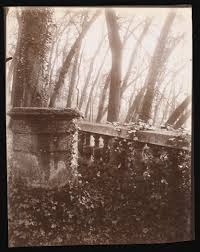










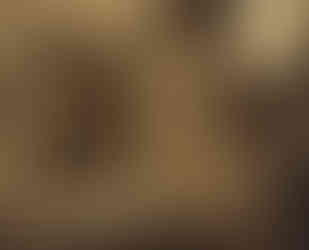



















































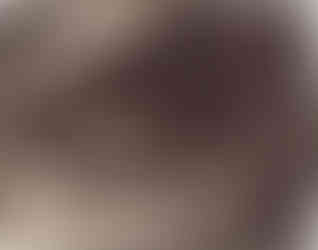
















































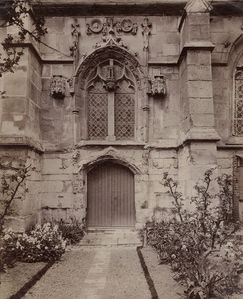





































































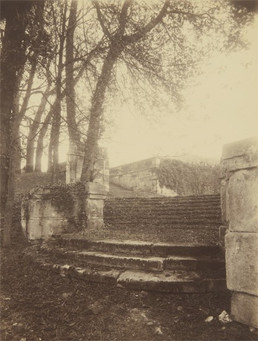





























Comments